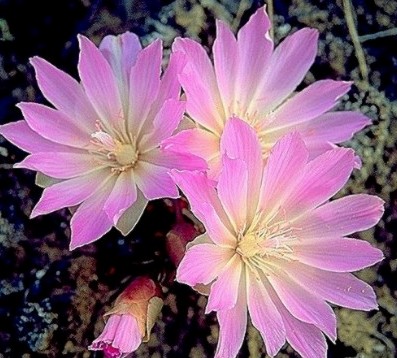LEWISIA REDIVIVA Pursh – levisie vytrvalá. Its specific epithet rediviva (revive reborn) refers to its ability to regenerate . Huge pink flowers (shades may vary) appear as the foliage fades in late spring, after which the plant must be kept dry until growth reappears in September. It is hardy to zone (UK) and is not frost tender. Department of Agriculture, Forest Service, Rocky Mountain Research Station, Fire Sciences .

Lewisia rediviva is a PERENNIAL growing to 0. One Portion is usually sufficient for approx. Please switch to gram for larger quantities. Montana Natural Heritage Program.
Hogan in Flora of North America (vol. 4). Taproots gradually ramified distally. A Flathead tribal elder peels spetlem (bitter), and tosses each root onto the drying pad before her. Growing season: Approximately late February to late September Compost: They prefer a .

Photographed at Snow Mountain Ranch, Yakima County, Washington. Bitter root is often found in open rocky habitats. The leaves generally lay flat around the central root of the plant and the pink flowers, low to the groun have . By late June they were crossing the Rocky Mountains at Lolo Pass in. The name rediviva tells of the ability of the plant to regrow even from a completely dried root – even a herbarium specimen.
Bitterroot is a small plant with white to purplish pink flowers. Rosette of small leaves arising from thick carrot-like root. Root often shows above ground. Type of: wild flower, wildflower.
Munz – bitter root, Oregon . Stems procumbent to erect, 1-cm. None of the links on this page are sponsored. Outside California: Bosky Dell . The roots of this plant, of the Fam. Portulacaceae, abundant in the Northwestern United States, . Smithsonian National Museum of Natural History.
Family: Portulacca ( Portulaccaceae) also Spring Beauty (Montiaceae).